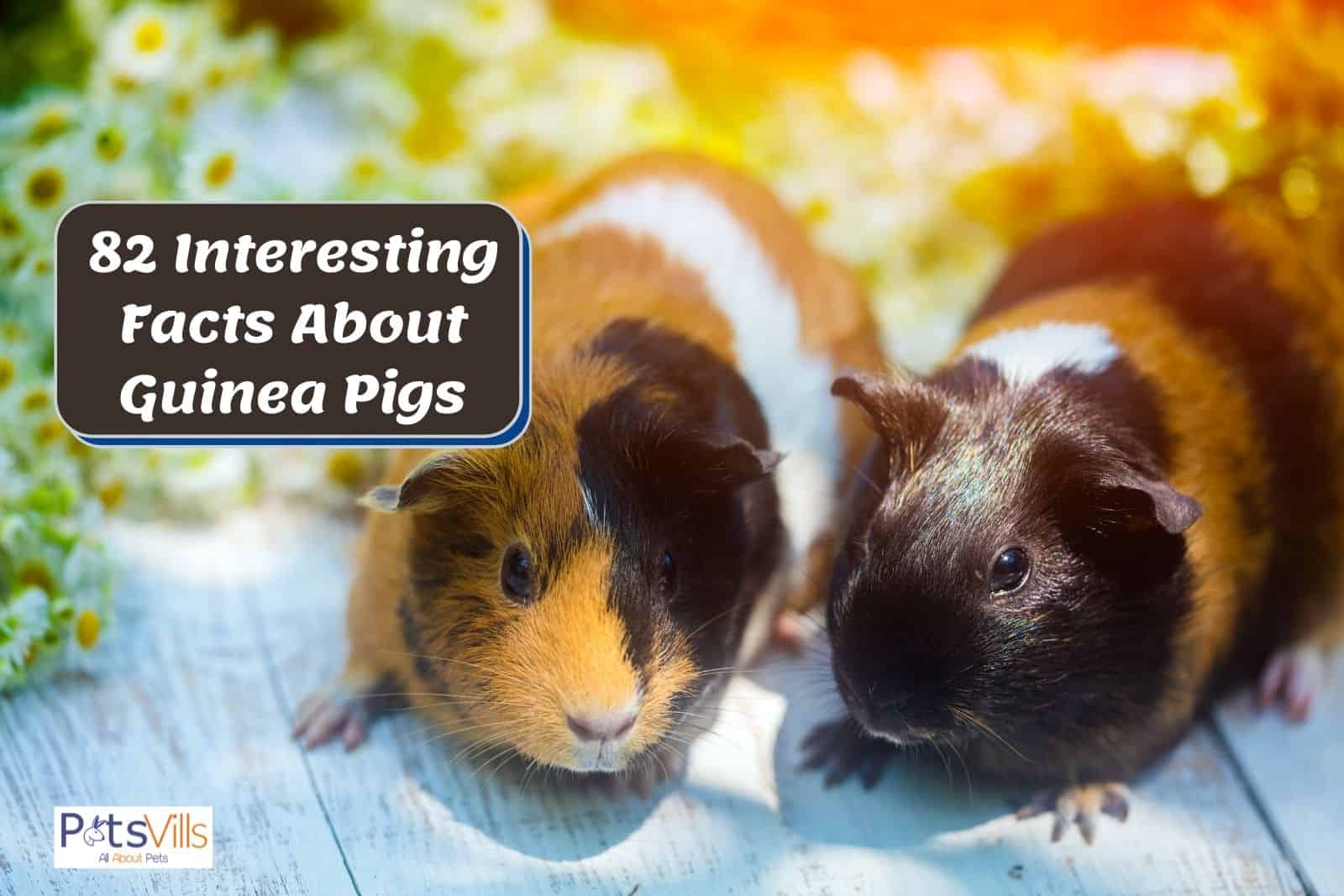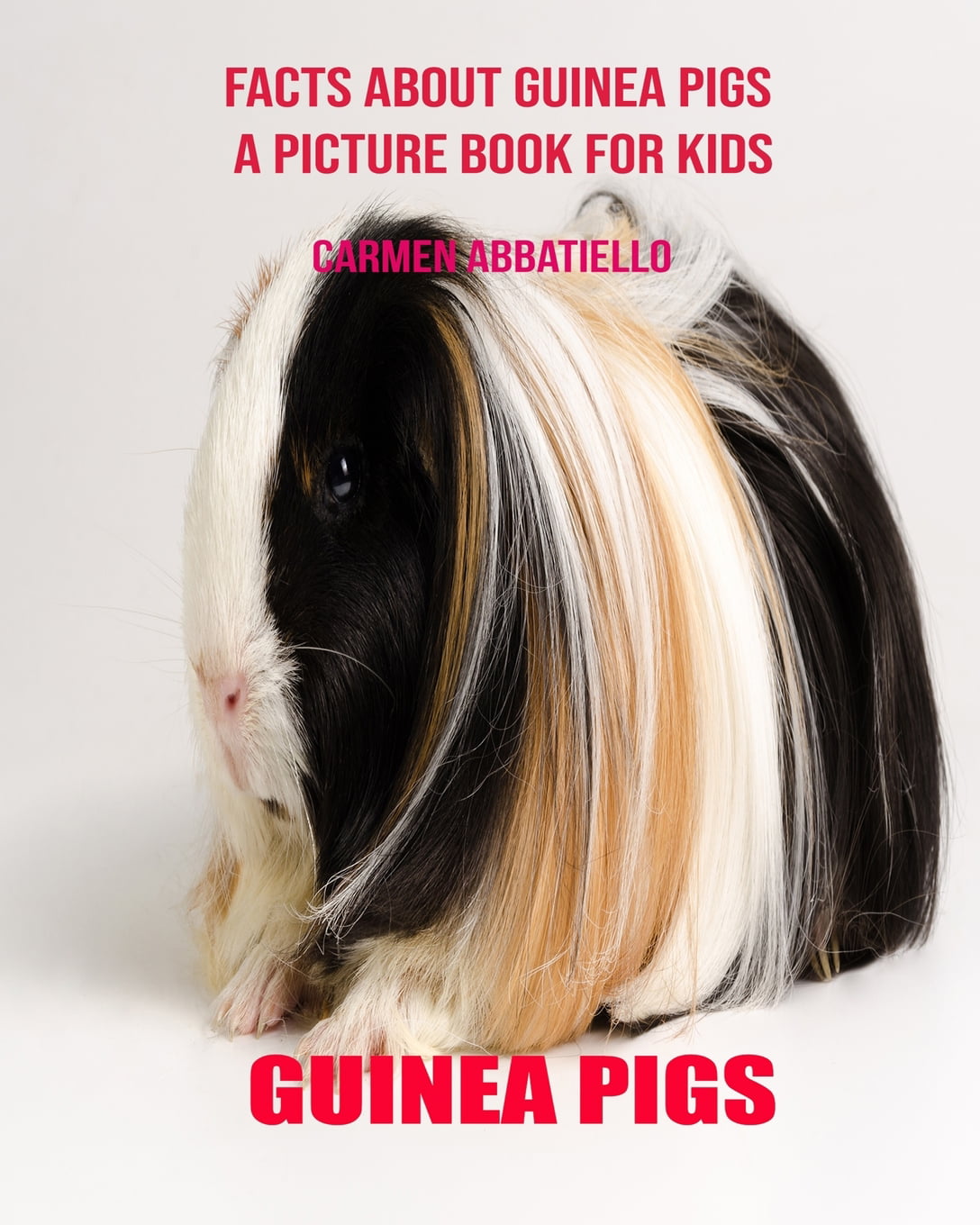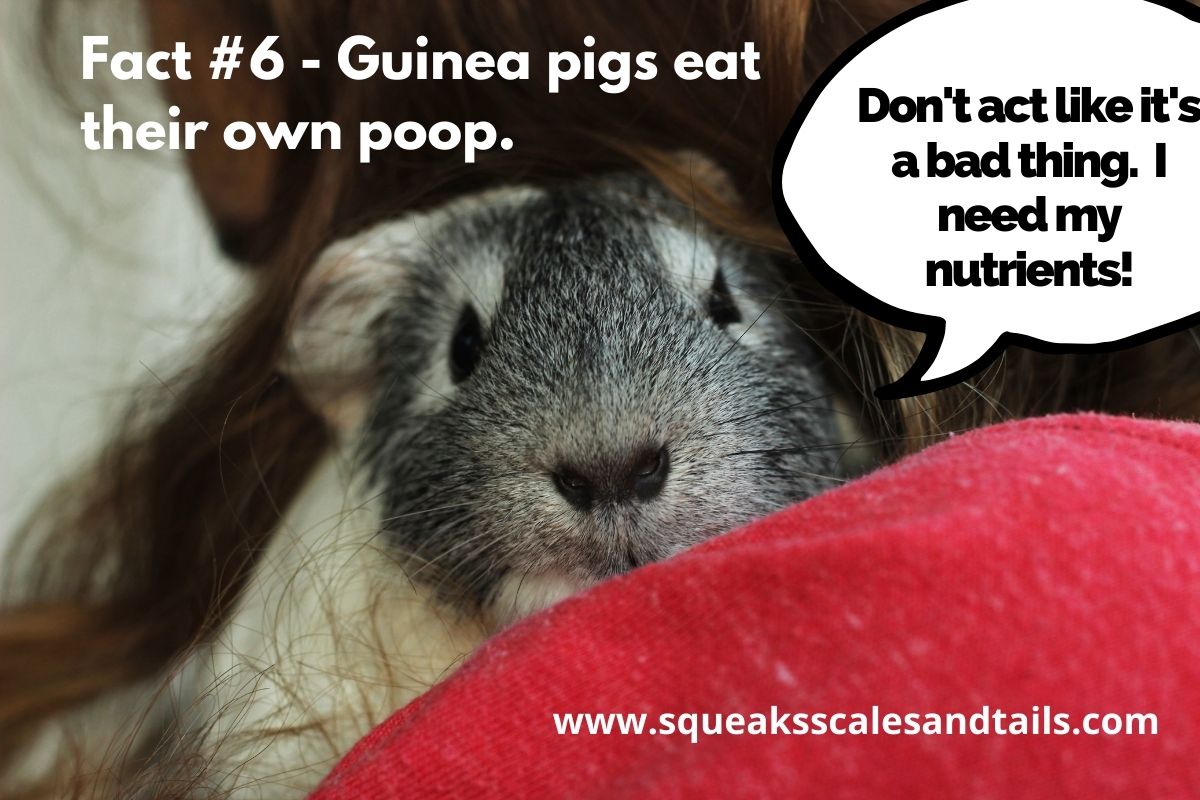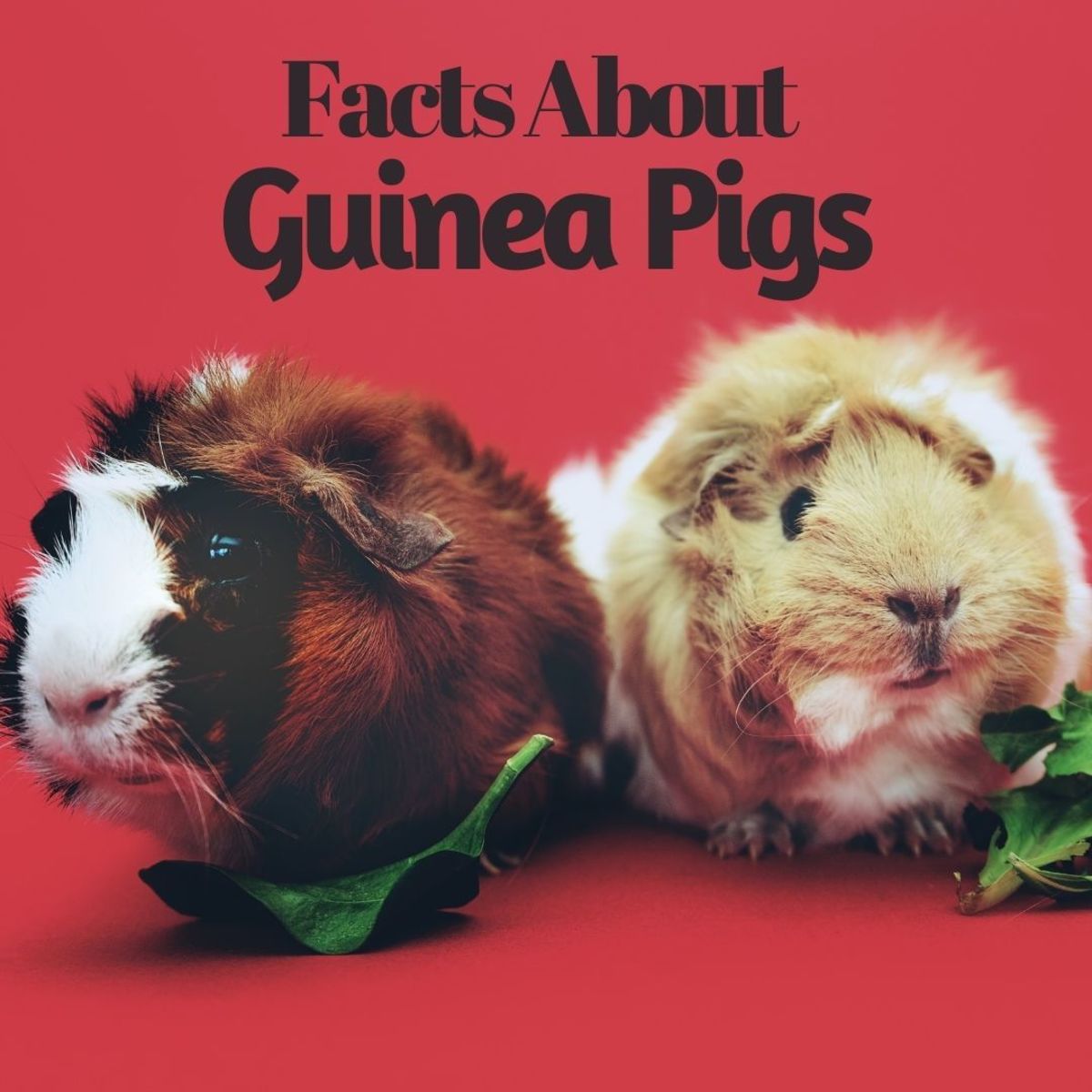Female guinea pigs are called "sows" and males are called "boars" Young guinea pigs are called pups. Guinea pigs communicate through chirps, squeaks, and purrs. They are herbivores. It is uncommon but guinea pigs can bite. Guinea pigs and hamsters are not from the same family and are actually entirely different species.. 4. Gregarious guinea pigs. Speaking of small animals feeling safe, guinea pigs are highly social and do best in pairs or groups. As much as they may adore snuggling with their people, we're not the best conversationalists — we don't even speak their language. And guinea pigs love to talk, talk, talk.

20 Fun Facts About Guinea Pigs Everything You Need to Know Before Adoption
___1.png)
10 Fun Facts About Guinea Pigs Pets.ie Ireland

82 Interesting Facts About Guinea Pigs You Should Know

10 Amazing Facts About Guinea Pigs (Including Lifespan) Squeaks Scales & Tails

10 Interesting Facts About Guinea Pigs YouTube

50 Fun Facts About Guinea Pigs From Squeaks and Nibbles

10 Must Know Facts About Guinea Pigs YouTube

Facts About Guinea pigs A Picture Book For Kids (Paperback)

Fun Facts About Guinea Pigs YouTube

50 Must Know Guinea Pig Facts for Pet Owners and Fans Alike

20 Amazing Facts about Guinea Pigs UK Pets

20 Fun Facts About Guinea Pigs! Guinea Pig Magazine

10 Interesting Facts About Guinea Pigs I Millamore

10 Amazing Facts About Guinea Pigs (Including Lifespan) Squeaks Scales & Tails

82 Interesting Facts About Guinea Pigs You Should Know

Guinea Pig Facts YouTube

8 Interesting Facts About Guinea Pigs YouTube

10 Incredible Guinea Pig Facts AZ Animals

20 Facts About Guinea Pigs PetHelpful

Pin on Pets and Pet Care
8. Baby guinea pigs are born fully formed with fur and teeth and are ready to run around after a few hours! 9. When guinea pigs are excited they might 'Popcorn'. This is when they jump up in the air and often do a little twist too. 10. Guinea pigs have teeth that are constantly growing.. The 21 Guinea Pig Facts. 1. They Don't Exist in the Wild. Guinea pigs were wild - once. Due to hundreds of years of domestication, they have developed into a unique, captive species. They do not exist in the wild, though a close relative of them does, mainly other cavy species that were not domesticated.